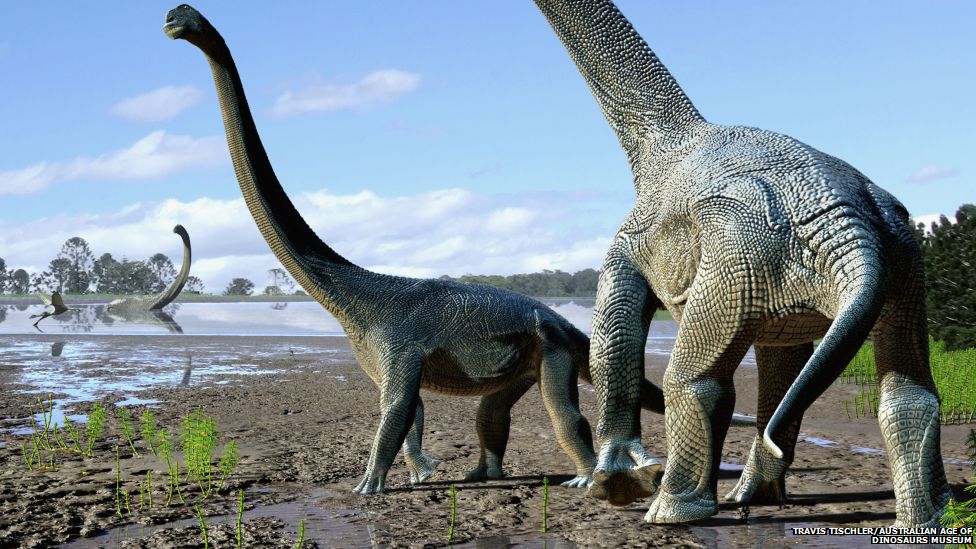Giant dinosaurs 'crossed continents'
- Published

Some of the giants of the dinosaur family may have originated in South America and crossed over Antarctica to Australia about 100 million years ago.
The dinosaurs were able to make the journey when a spell of warming allowed passage over frozen land bridges between the continents.
Two fossil discoveries in Australia shed new light on this theory.
Both specimens are sauropods - a group of large, herbivorous dinosaurs with long necks and small heads.
Further classified as titanosaurs, they are among the largest dinosaurs ever to walk the Earth.
Lead researcher Dr Stephen Poropot, of the Australian Age of Dinosaurs Museum, said the specimens add to our knowledge of the area 95 to 98 million years ago.
"We get a much better idea of the overall fauna," he said.
"And as a result we can start piecing together how climate affected these dinosaurs, how the positions of the continent affected those dinosaurs and how they evolved through time as well."
Sauropod family tree
One of the dinosaurs was found near the town of Winton in Central West Queensland.
It has been named Savannasaurus elliottorum after members of the Elliott family, who found the fossil in a pile of bones while rounding up sheep at their property.
The skeleton has been pieced together from 17 pallets of bones encased in rock - a process that took 10 years.
The researchers also uncovered head bones from another sauropod species Diamantinasaurus matildae.
"This new Diamantinasaurus specimen has helped to fill several gaps in our knowledge of this dinosaur's skeletal anatomy," said Dr Poropat.
"The braincase in particular has allowed us to refine Diamantinasaurus' position on the sauropod family tree."
Polar crossing
The two specimens have helped to show that titanosaurs were living worldwide by 100 million years ago.
This became possible because of the arrangement of the continents and changes in the global climate.
Prof Paul Upchurch, of University College, London, said Australia and South America were connected to Antarctica throughout much of the Cretaceous.
When Savannasaurus was alive, 95 million years ago, global average temperatures were warmer than they are now, but it was quite cool at the poles.
"We suspect that the ancestor of Savannasaurus was from South America, but that it could not and did not enter Australia until approximately 105 million years ago," he said.
"At this time global average temperatures increased allowing sauropods to traverse landmasses at polar latitudes."
The research is published in N Scientific Reports.
Follow Helen on Twitter @hbriggs.
- Published17 May 2014